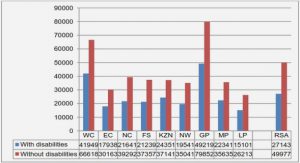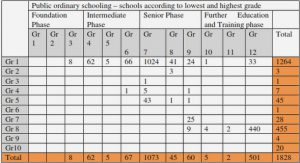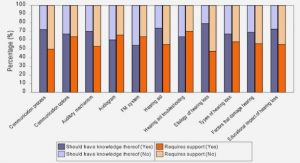Get Complete Project Material File(s) Now! »
Binary systems of compact objects
The amplitude of GW is linked to the compacity of the two compact objects. The notion of compacity will be widely discussed in Part II but we will briefly introduce it here. The compacity of a system of mass M and size R is defined as C = GM (2.1) Rc2 .
An object whose radius equals its Schwarzschild radius, namely a BH, has a compacity of C = 1/2 which is the maximum one object can have. Objects that have a compacity of the order of & 0.1 are also called compact. Among those, we find obviously BHs but also neutron stars (NS) that have a typical compacity of ∼ 0.15.
As we will see later, all the direct detections of GWs so far have been emitted from binary systems of compact objects, abbreviated as compact binaries. The simplest system that one can think of is an isolated binary black hole (BBH) because only gravitational interactions occur. Compact binaries lose energy through the emission of GWs. At the leading order, the energy flux of emitted GWs, derived using (1.29a) and (1.28), reads F = 32 G4m5ν2 (2.2) , 5 c5r125 where r12 is the separation distance between the two compact objects, m = m1 + m2 the total mass and ν = m1m2 is the symmetric mass ratio of the system. On the other hand, this energy flux must correspondm2to the loss of some mechanical energy of the system E. Hence, while looking at the energy balance of the system we introduce the balance equation dE < F >= − dt . (2.3).
Coalescences involving neutron stars
As previously said, NSs are also compact objects, thus, in a binary system, they are also suscep-tible to emit GWs that we can detect. In fact, coalescences of BH-NS or NS-NS have already been detected (see Sec. 2.3 for more details). However, the waveform can be very different than the one from a BBH merger. Indeed, NSs have an internal structure that BHs don’t have. This additional complexity affects the scenarios in the binary system, see Fig. 2.2. In the inspiral phase, the internal structure of NSs barely affects their motion and the waveform. The discrepancy with BBHs is a small effect that is noticeable only in the late inspiral, right before the merger. It is due to the tidal interaction between the two companions. A part of my PhD was to compute the impact of the internal structure of compact objects in the emitted GW for the inspiral phase, see Part II.
Third generation detectors
Next generation detectors are currently being designed. The two main projects are LISA and Einstein Telescope. However, they work slightly differently than the second generation detectors. LISA (Laser Interferometer Space Antenna) is a project led by ESA together with NASA. It is a space-based detector which is made of three spacecrafts forming an equilateral triangle with sides of 2.5 millions kilometers. The barycentre of this triangle will orbit around the Sun on the Earth orbit. Each of the spacecraft will emit two laser beams in the direction of the others. LISA aims mainly at detecting supermassive black hole mergers, EMRIs and the inspiral phase of stellar mass compact binaries. Of course this list is non exhaustive and many other effects are expected to be detected. Einstein telescope, on the other hand, is a European project of a ground-based detector. It is also shaped as a triangle with arms of 10 kilometers. Its frequency band is roughly the same as the second generation but its sensitivity is drastically increased, see e.g. [27]. This will notably allow us to better constrain the finite-size effects in BNS systems.
Direct detections of GWs
The network of GW detectors started with the two LIGO detectors (Hanford and Livingstone) in its first run called O1. This run lasted from 2015/09/12 to 2016/01/19. After this run, the detectors were upgraded in order to launch the second observation run O2 that started from 2016/10/30 to 2017/08/25. In the mean time, Virgo joined the collaboration on 2017/08/01. The third run was split in two runs called O3a and O3b. O3a started on 2019/04/01 to 2019/10/01 while O3b from 2019/11/01 to 2020/03/27. KAGRA also joined the GW network on 2020/02/25. Unfortunately, the O3b had to be stopped due to the COVID-19 pandemic, only a month after KAGRA started. During these runs, more than 50 events have been detected. As mentionned above, the detectors were designed to detect binary systems of compact objects that have stellar masses, so all the de-tections are in this mass range. Two catalogs are available [28, 29] listing the confirmed events by the collaborations for the O1, O2 and O3a runs. Although some events in the O3b run have been confirmed, the O3b catalog is not yet published.
The O1 run
The catalog [28] regroups the O1 and O2 events confirmed by the collaboration. The first event ever detected [18], GW150914, on 2015/09/14, marked a breakthrough in modern physics. Not only did it show that we were indeed able to detect GWs, but also the high value of the estimated masses of the two companions being of m1 = 36+5−4 M and m2 = 29+4−4 M allowed the signal to be extremely clear as we can see in Fig. 2.5. The whole O1 run accounts 3 BBH events of similar mass.
Figure 2.5: Figure extracted from [18]. H1 stands for the Hanford detector, L1 for Livingstone. Top row, left : H1 strain. Top row, right : L1 strain. GW150914 arrived first at L1 and 6.9+0−0..54 ms later at H1; for a visual comparison, the H1 data are also shown, shifted in time by this amount and inverted (to account for the detectors’ relative orientations). Second row : Gravitational-wave strain projected onto each detector in the 35–350 Hz band. Solid lines show a numerical relativity waveform for a system with parameters consistent with those recovered from GW150914. Shaded areas show 90% credible regions for two independent waveform reconstructions. One (dark gray) models the signal using binary black hole template waveforms. The other (light gray) does not use an astrophysical model, but instead calculates the strain signal as a linear combination of sine-Gaussian wavelets. Third row : Residuals after subtracting the filtered numerical relativity waveform from the filtered detector time series. Bottom row : A time-frequency representation of the strain data, showing the signal frequency increasing over time.
The O2 run
During the second run, 8 events have been confirmed. Among those, 7 BBH mergers in which the two BHs had similar masses. They were all stellar BHs and the chirp masses of the events ranged from 8M to 36M .
The most interesting event of this run is undoubtedly the remaining event, GW170817, which was coming most likely from a BNS system. Indeed, it was the first ever detection of a BNS merger. In addition, an electromagnetic counterpart has been detected with a gamma ray burst 1.7s after the GW signal. Furthermore, the BNS was in a blind spot of Virgo which started collecting data only two weeks before the event. This allowed to restrain the sky area in which the event took place and the first telescope to locate its position, 10.9h after the event, was the Swope Supernova Survey [30]. This detection has many physical implications notably due to the electromagnetic counterpart. The first of them is the very precise constraint on the speed of GWs which is |cGW − c| . 10−15c. This single constraint allowed to discard many alternative theories of gravitation and further confirms general relativity. Moreover, the detection allowed to constrain the possible models on the internal structure of NSs through the equation of state [31]. This topic is widely discussed in Part II. An additional feature of this detection is that the observation of the electromagnetic counterpart allowed us to measure an independant value of the Hubble-Lemaître constant H 0 [17]. The resulting object has a mass of 2.74+0−0..0401M for a low-spin prior. We do not know if it is a BH or a NS, but it is either the lowest mass BH or the highest mass NS known.
The O3 run
As mentionned above, the O3 run has been split in two dinstinct runs: O3a and O3b. In O3a, the confirmed events are listed in [29]. In this catalog, 39 events are displayed and the total duration of the run was ∼ 26 weeks, which means that ∼ 1.5 event per week has been detected. Out of the 39 events, possibly 3 come from systems containing at least one NS. However, there was no constraint on the tidal parameters and no electromagnetic counterpart has been detected, so we cannot rule out the BBH hypothesis. As an example, the event GW190425 is likely BNS due to the small estimated masses of the companions m1 = 2.0+0−0..63M and m2 = 1.4+0−0..33M . Interestingly, GW190814 has the highest recorded mass ratio: m1 = 23.2+1−1..10M and m2 = 2.59+0−0..0809M [32]. It is the first significant mass ratio that has been recorded.
The O3b catalog is not yet available, but two BH-NS events, GW200105 and GW200115, have been confirmed [33]. Once again, no electromagnetic counterpart has been detected. Although numerous events have been detected from compact binaries, the LIGO, Virgo and KAGRA collaborations try to extract possible signals coming from other types of sources such as short GW bursts [34] or continuous waves [23], cosmic strings [35] or dark matter [36]. No such signal has been found so far. Furthermore, tests on general relativity can be performed [37], e.g. by seeking additional GW modes that are not predicted by general relativity.
Approximation methods for compact binary systems
Let us now turn to the theory and review the different ways to solve the Einstein equations for compact binaries. As we will see in Secs. 3.2.1 and 4.1, we can separate the different physical effects (such as point-particle, spins, finite-size effects…) that enter the waveforms. For example, spins of compact objects affect the waveform but the effect is small when compared with the waveform generated by static BHs in a binary system. As we will see in the following chapters, the computations I performed during my PhD were on two topics: The extension of the precision on the point-particle and on the finite-size effects in the inspiral of compact binaries. Below are listed different methods to solve, either analytically either numerically, the Einstein equations and we give the state of the art in these methods. However, we do not present the results regarding spin effects.
Post-Newtonian
The post-Newtonian (PN) formalism is an approximation method that provides analytical solu-tions for the description of the inspiral of compact binaries. This formalism is the one that I used throughout my PhD and is detailed in Chapter 3. However, let us briefly mention here in what it consists. The PN approximation assumes a slow motion of the bodies. It is a Taylor expansion of powers of v/c, v being the relative velocity of the companions and c the speed of light. One PN order corresponds to a quantity of the order O(1/c2).
For the point-particle part of the waveform, meaning that the two BHs have no spin and no internal structure, the conservative dynamics is known to 4PN order [38, 39, 40]. Recent works also derived some of the coefficients up to 6PN [41, 42]. The radiative sector on the other hand is known up to 3.5PN [43] and 4PN is currently being investigated (see Part III for more details). Moreover, the 4.5PN term in the GW flux is already known and has been published in [44].
Finite-size effects arise in the PN expansion at 5PN order. Even though it is a high order, the numerical value of the leading order is high enough to be measurable by current ground-based detectors. Computations on finite-size effects have been among the projects studied during my PhD (see Part II). More specifically, I derived the tidal effects in the GW phase (in the absence of spins) from 5PN to 7.5PN, so 2.5PN relative order. This problem has been tackled by multiple groups. For references, see Table 4.1 for the conservative sector and Table 5.1 for the radiative sector. The result for the GW phase including tidal effects is provided in (5.41)-(5.42). The coupling to spins has been derived up to 6.5PN [45]. For more details on tidal effects in the PN expansion, see e.g. the recent review [46].
Table of contents :
I General introduction
1 General relativity and linearized theory of gravitational waves
1.1 General relativity in a nutshell
1.2 Linearized theory
1.3 Gravitational waves propagation
1.4 Link with the source: the Einstein quadrupole formula
2 Detections
2.1 Possible sources
2.1.1 Binary systems of compact objects
2.1.2 Other types of sources
2.2 The detectors
2.2.1 Second generation detectors
2.2.2 Third generation detectors
2.3 Direct detections of GWs
2.3.1 The O1 run
2.3.2 The O2 run
2.3.3 The O3 run
2.4 Approximation methods for compact binary systems
2.4.1 Post-Newtonian
2.4.2 Effective field theory
2.4.3 Scattering amplitudes
2.4.4 Gravitational self force
2.4.5 Numerical relativity
2.4.6 Effective one body
3 The post-Newtonian formalism
3.1 The PN-MPM formalism
3.1.1 Linearized theory
3.1.2 The MPM algorithm
3.1.3 The radiative zone
3.1.4 Matching the source moments to a Post-Newtonian source
3.1.5 Explicit expression of the source multipole moments for a PN source
3.1.6 The PN metric
3.2 Binary systems of compact objects
3.2.1 Choice of stress-energy tensor
3.2.2 The regularisation schemes
3.3 Practical computations
II Tidal effects
4 Conservative sector
4.1 The effective matter action for static tides
4.1.1 Generalities
4.1.2 The total 2PN action for static tides
4.2 General methods
4.2.1 The Fokker method
4.2.2 Properties of the Fokker action
4.2.3 The reduction method
4.2.4 Derivation of EoM and conserved quantities from a generalized Lagrangian .
4.3 The NNL reduced Fokker Lagrangian in a general frame
4.3.1 Computation of the regularized tidal tensors
4.3.2 The Lagrangian
4.3.3 The EoM and conserved quantities
4.4 Lagrangian and conserved quantities in the CoM frame
4.5 The tidal Hamiltonian in isotropic coordinates
4.6 Tidal effects for quasi-circular orbits
5 Radiative sector
5.1 The stress-energy tensor from the tidal effective action
5.1.1 Derivation of the covariant stress-energy tensor
5.1.2 Ready-to-use expressions
5.1.3 The tetrad choice
5.2 The potentials
5.3 The source multipole moments
5.4 The GW flux
5.4.1 Computation of the tail terms
5.4.2 Computation of the flux
5.5 The GW phase
5.6 Conclusion of Part II
III Towards the 4PN phase
6 The 4PN source mass quadrupole
6.1 The general expression of the source mass quadrupole
6.2 The quadrupole moment as a function of potentials
6.2.1 The elementary potentials
6.2.2 The method of super-potentials
6.2.3 Integrations by part and surface terms
6.2.4 Expression in terms of potentials
6.3 The properly UV regularised quadrupole
6.3.1 Computation of C and distributional terms
6.3.2 Hadamard regularisation: computation of NC terms in 3d
6.3.3 Computation of the UV DDR for NC terms
6.3.4 Computation of surface terms in 3d
6.3.5 Final result for the UV regularised mass quadrupole
6.4 The properly IR regularised quadrupole
6.4.1 Computation of the DDR of potentials at point 1 and C terms
6.4.2 Computation of the d-dimensional potentials at spatial infinity
6.4.3 Computation of NC terms
6.4.4 Computation of the extra term and surface terms
6.4.5 Applying the IR shift
6.4.6 Final result for the source mass quadrupole
6.4.7 The IR DDR of the mass octupole
7 The 3PN radiative current quadrupole and the associated gravitational amplitude mode
7.1 The current multipole moments in d dimensions
7.2 The current quadrupole moment of compact binaries
7.2.1 Computation of the current quadrupole
7.2.2 Example of the super-potential method
7.2.3 Final result
7.2.4 The IR DDR for the current quadrupole
7.3 The gravitational-wave mode h21 at 3PN order
7.4 Test of the current quadrupole with a constant shift
7.5 Conclusion of Part III
Appendices
A Conventions and some technical aspects of General Relativity
A.1 General relativity
A.2 Notations and conventions in the PN approach
B The d-dimensional 4PN metric as function of potentials
C Proof that the Weyl tensor trace terms can be removed by a redefinition of the metric in the effective tidal action
D Lengthy expressions of the project on tidal effects
D.1 Conservative sector
D.2 Radiative sector
E 4PN
E.1 The shifts applied in the 4PN equations of motion
E.2 The 4PN mass quadrupole as a function of the potentials




